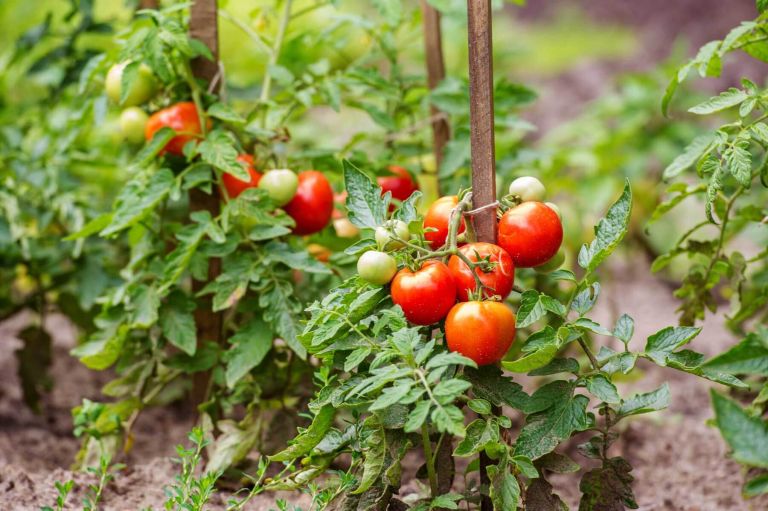
Tomato cultivation is a common motivation for starting a vegetable garden. Every gardener dreams of producing the perfect tomato – firm, juicy, sweet yet tangy. However, tomatoes can be challenging to grow. The key to successful tomato cultivation is selecting the right varieties, planting them properly, and managing them proactively. Here are ten essential tips for growing tomatoes:
1. Determinate or indeterminate tomatoes:
Determinate plants grow to a specific size and produce all their fruits at once, while indeterminate varieties continue to grow and produce tomatoes throughout the season.
2. Start your seeds early.
Tomato seeds germinate in 5-7 days under ideal conditions and take 6-8 weeks to grow into ready-to-plant seedlings. Starting your seeds early gives them a head start and ensures they are strong and healthy by the time they are ready to be transplanted outdoors.
3. Transplant tomatoes twice to strengthen the stem and increase root mass:
Tomatoes have a unique characteristic where they can develop roots along their stems. By transplanting them twice, you allow the plant to develop a stronger stem and a larger root mass.
4. Select a location with full sun:
Tomatoes require a lot of sunlight to grow well. They need at least 8 hours of direct sunlight each day for optimal growth and fruit production. Choosing a location with full sun exposure will ensure your tomatoes get the light they need.
5. Don’t crowd tomato seedlings:
Tomato plants are deep-rooted and spread out quite a bit. Giving them ample space to grow ensures that they can spread their roots wide and deep, leading to healthier plants and a more abundant harvest.
6. Fertilize the soil richly:
Tomatoes are heavy feeders and require a rich, fertile soil to thrive. They need plenty of phosphorus, calcium, and other essential nutrients throughout the growing season. Regular fertilization will ensure your plants have the nutrients they need to produce tasty and abundant fruits.
7. Water deeply, but less frequently:
Tomato plants have strong, deep roots and can withstand periods of dryness. However, they do best when watered deeply at the root level once or twice a week. This encourages the roots to grow deeper and makes the plant more resilient to drought.
8. Prune the lower leaves
When the tomato plant is about 3 feet tall, remove the leaves from the bottom of the stem. These leaves are usually the first to develop fungal problems and removing them helps prevent disease spread.
9. Use mulch:
Once your tomato plants are more than 6 inches tall, apply a generous layer of organic mulch over the soil. Mulching helps retain soil moisture, suppress weeds, and regulate soil temperature, all of which benefit tomato growth.
10. Pinch and prune for more tomatoes:
Pinching off the suckers that develop in the junctions of two branches can help direct more of the plant’s energy into producing fruit. This simple practice can lead to a more abundant harvest.
In conclusion, growing tomatoes can be a rewarding experience. Not only will you have delicious homegrown tomatoes ripe for eating and canning come harvest time, but you will marvel at your results.


